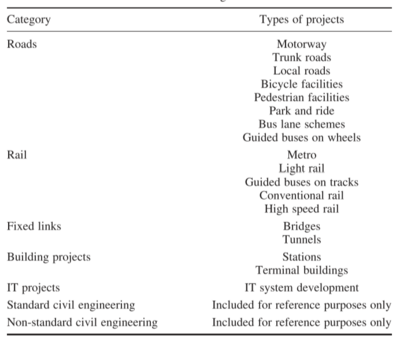Development phase of idea to project
| Line 41: | Line 41: | ||
*9. What is the priority of the project? | *9. What is the priority of the project? | ||
*10.What are the potential risks? | *10.What are the potential risks? | ||
| + | |||
| + | == SWOT analysis == | ||
| + | |||
| + | The SWOT analysis is simple tool for identifying not only weaknesses and threats of the plan, but also the strengths and opportunities it makes possible. Using the SWOT puts the plan problems and choices more structured and systematic way. This helps just not to notice the areas where action and decision is needed but also make better choices in the start. SWOT is popular tool among companies because it fast and easy to use. But it can also cause problems being very subjective depending of the person doing the analysis. SWOT analysis should be used more as a guide instead as strict tool. | ||
| + | |||
| + | SWOT is presented by 2x2 matrix, strength/ weaknesses for internal factors and opportunities/threats for external factors. | ||
| + | |||
| + | [[File:Table.png|400px|]] | ||
Revision as of 19:52, 21 September 2015
A project could be described to be scheduled results-oriented multitask unity which includes certain amount of risks. For execution the project an organization has to be implented for the specific project. Each project has its own precisely defined objectives which are developed from the idea. In addition to the objectives the project has to be defined by project organization, time schedule and the resources which are available. Succesful projects are normally achieved by doing thorough groundwork of the idea.
This article focuses in the area where is critical that the start of planning process should be involved from the beginning of the idea so all relevant factors could be taken into account for success of the project. The planning is based on the one hand resolving the obstacles in the development process, on the other hand assessing the risk, opportunities and strengths that the project could meet. From the different options should be selected the most effective and durable option. In the article is given choices for working methods and tools.
Contents |
Project Management
General of project development
There are many project phases associated with the project management process. The most common construct of the project management process includes 5 phases:
- 1. initiation
- 2. planning
- 3. execution
- 4. monitor/control
- 5. closing.
In general, anything prior to the Project Charter which begins the initiation phase is considered Preliminary Planning.The Project Charter is the document that identifies the formal start of a project. Preliminary Planning is any work done before the formal project start.
Planning
The most common shortcomings in the project planning are neglect of adequate preliminary studies as well as poor management of the structure concerning the plans. The project plan may not the work as effective as it should.
A closer examination of not so successful projects often also reveals that the projects are planned much of the project producer and experts viewpoint. Stakeholders and the target groups (customers) haven’t been adequately addressed about the project. The beneficiaries commitment has stayed weak because they haven’t had a sufficient enough impact on the project specially on the content or operating models.
Behind of successful project can be found generally thorough groundwork. The implementation model is tailored to the needs and opportunities of the project stakeholders. Planning has involved every branch of the stakeholder network instead that the plans would be drawn by experts who are not involved enough on the project. As early as in the design phase of the project the end of the project has been thought, what is the level needed for accomplishing the objectives and what is needed to be done in order to continue operate in a sustainable basis.
Preliminary planning
Planning is advisable to start with critical preliminary design stage on which basis the more precise planning design for the project is selected. In the preliminary planning is needed to do various backround studies for starting the project and for comparing these studies good method could be to use SWOT analysis.
Preliminary Planning can be a formal or informal process depending on the organization, the culture, and its procedures. Either way, it is a good practice to gather some key information before you begin a project. This process can begin by answering these common Preliminay Planning questions:
- 1. What is the goal of the project?
- 2. Who are the known stakeholders?
- 3. What is the business case for this project?
- 4. What are the alternatives to providing the deliverables?
- 5. What is the budget?
- 6. What is the Scope?
- 7. What is the project schedule?
- 8. What are the known deliverables of the project?
- 9. What is the priority of the project?
- 10.What are the potential risks?
SWOT analysis
The SWOT analysis is simple tool for identifying not only weaknesses and threats of the plan, but also the strengths and opportunities it makes possible. Using the SWOT puts the plan problems and choices more structured and systematic way. This helps just not to notice the areas where action and decision is needed but also make better choices in the start. SWOT is popular tool among companies because it fast and easy to use. But it can also cause problems being very subjective depending of the person doing the analysis. SWOT analysis should be used more as a guide instead as strict tool.
SWOT is presented by 2x2 matrix, strength/ weaknesses for internal factors and opportunities/threats for external factors.
